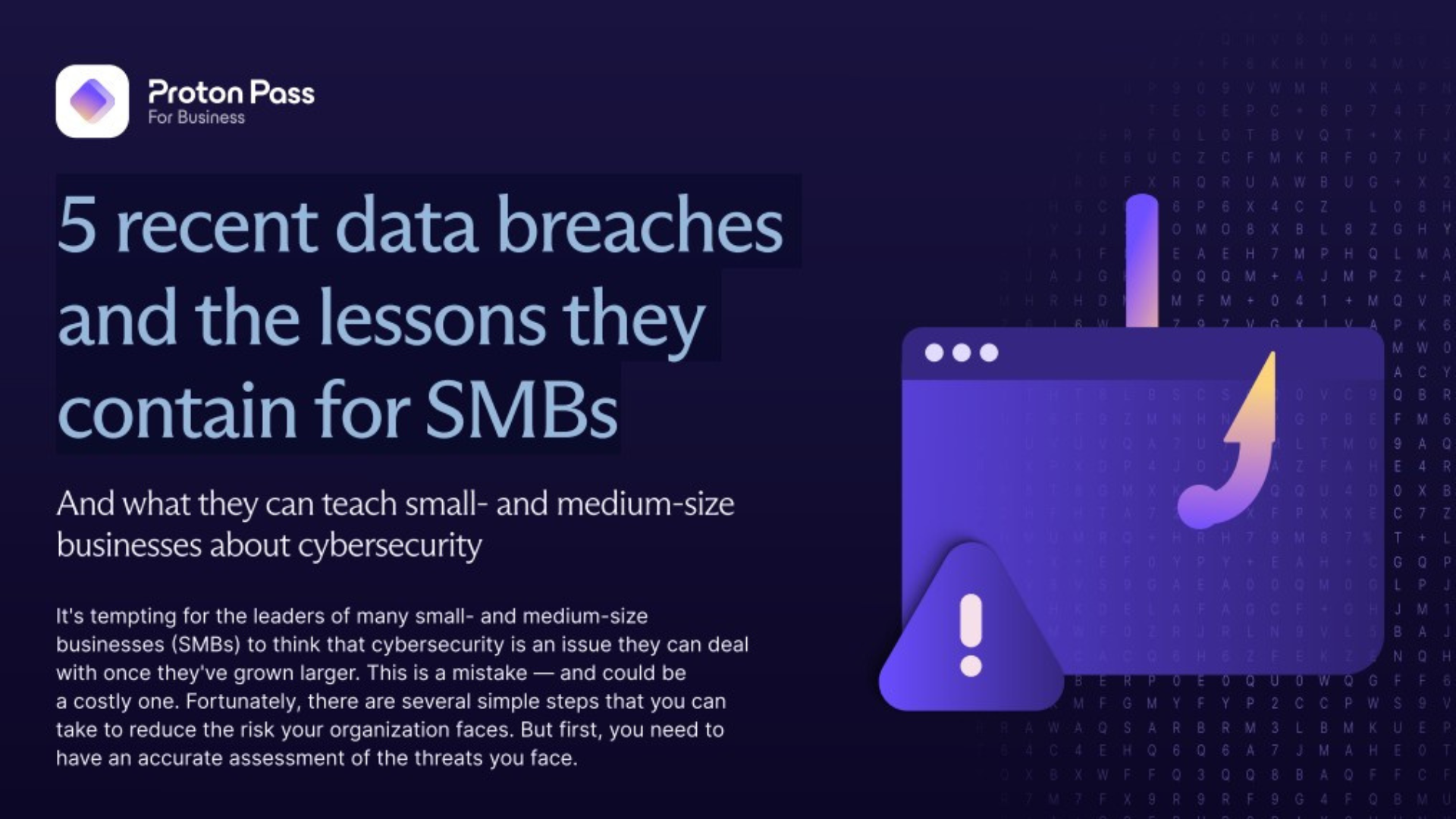Cybersecurity leaders must stop seeing resilience as a "tick box exercise" to achieve meaningful protection, says Gartner expert
Collaboration between departments and a better understanding of organizational metrics are key to addressing security blindspots


Businesses still fall short when it comes to embedding resilience in their operations, according to a Gartner expert, due to low collaboration across teams and a lack of business focus.
Arthur Sivanathan, senior director analyst at Gartner, led a talk on organizational resilience at the Gartner Security & Risk Management Summit, held in London at the end of September.
In his talk, Sivanathan advocated for far more focus on business processes via business impact assessments (BIAs), for a more holistic approach to securing critical business functions.
30% off Keeper Security's Business Starter and Business plans
<p>Keeper Security is trusted and valued by thousands of businesses and millions of employees. Why not join them and protect your most important assets while taking advantage of this special offer?"Gone are the days when we did business impact assessments purely for business continuity and disaster recovery, it doesn't work anymore," he said.
In today's digitally-connected world, he said, BIAs must be carried out at the business function layer, so that CISOs and CIOs can demonstrate to the business teams the areas that need the most urgent attention and investment.
"The business impact assessment is the heart of cyber resilience," Sivanathan said in conversation with ITPro after the talk.
Sivanathan showed an example of a BIA diagram assessing the procurement management processes of a finance unit.
Sign up today and you will receive a free copy of our Future Focus 2025 report - the leading guidance on AI, cybersecurity and other IT challenges as per 700+ senior executives
This BIA could be used to scrutinize the effect of disruption to processes such as inventory management, purchasing, distribution, and supplier payments and how each is tied to dependencies like IT infrastructure, workforce decisions, and third-party vendors.
Without this level of cross-department detail and agency, cybersecurity professionals won't be able to adequately embed resilience throughout the organization, he added.
"Traditionally, people focus more on detection, response and recovery but I think there's a bigger play here because if you look at third-party risk, that's in governance," Sivanathan told ITPro.
"Identification is crucial. Have you got full visibility over not just your hardware assets, your software assets, your critical third parties, your data?"
Cross-party collaboration is key to this, he said, with security teams and neighbouring capabilities such as crisis management, business continuity, disaster recovery, IT, and the business needing to work together on establishing BIAs.
'Resilience' can be hard to define
Measuring cyber resilience is a recurring issue for cybersecurity leaders, Sivanathan explained, because it can't be measured across just one metric.
"I think there are a lot of vendors out there who try and come up with that metric, and it doesn't really work, because they're looking at one pillar in isolation... so that's something we're looking to establish."
In his talk, Sivanathan cited a number of definitions for cyber resilience, including NIST SP 800-172, the Global Cyber Security Capacity Centre at the University of Oxford, and the International Organization for Standardization.
Sivanathan said that the multitude of definitions can be confusing for leaders, but urged attendees to look beyond them to the scope of their role.
"The key statement is the ability to limit the impacts and adapt quickly to resume business operations in the rise of cyber regulations."
He acknowledged the rising pressure on leaders to adhere to the Digital Operational Resilience Act (DORA) and Network and Information Systems 2 (NIS2) Directive.
The majority of audience members at the talk raised their hands when asked to identify if they're currently dealing with this legislation in their day-to-day work.
In the past 18 months, he said, there's been a big shift away from enquiries about the implications of DORA, with around 80% of the 15-20 enquiries he takes per week now focused on NIS2.
Many organizations are struggling to comply with NIS2. But in the pursuit to meet legislative requirements, Sivanathan warned against coming to see resilience as a mere "tick box exercise".
He pointed to NIST CSF 2.0 as a fundamental framework for resilience, citing Ireland and Belgium as regions leaning on this legislation to put accountability at the very top level of decision-making.
In contrast, Sivanathan showed data from Gartner's August 2025 Cybersecurity Controls Assessment, which found large gaps between the average importance CISOs place on functions such as response and recovery and the average maturity of their organizations in these areas.
The importance of practical exercises
To improve maturity and business buy-in, Sivanathan advocated for more foundational steps such as running tabletop exercises, to test cyber resilience strategies against real life incidents.
Sivanathan said 46% of organizations test less than 20% of their business continuity plans using tabletop exercises each year, while more mature organizations are running these tests at every level including at the top with executives.
This is essential in cases such as deciding whether your organization will agree to ransomware payments in the event of a severe ransomware attack, Sivanathan added:
"The number of organizations I speak to that say, when I first ask about this, 'oh no, we'd never pay ransoms, it's company corporate policy, we would never pay the ransom.
"However, when I started to dig or to ask pointed questions, there was suddenly an aha moment of 'no, I think we need to go and check' because if all of your data's gone, your infrastructure's gone, what are you going to do? You can't sustain it as an organization; maybe there is a thing where you have to pay a ransom."
Sivanathan added that tabletop exercises should be run at multiple levels, including wider stakeholders, business teams, and technical teams, for maximum effectiveness.
But he cautioned that every organization will need to take a slightly different approach, particularly when it comes to using tabletop exercises to clue in executives, as they aren't the individuals who directly manage a crisis.
"You definitely need legal and compliance in some of those activities, especially around messaging, because the first message that goes out after an incident can mitigate the reputational damage. If that's not worded correctly, it can have serious implications."
Looking ahead to 2026, Sivanathan said organizations would continue to struggle with NIS2 as it embeds in various regions, with UK businesses also closely tracking the passage of the Cyber Security and Resilience Bill in parliament.
Make sure to follow ITPro on Google News to keep tabs on all our latest news, analysis, and reviews.
MORE FROM ITPRO

Rory Bathgate is Features and Multimedia Editor at ITPro, overseeing all in-depth content and case studies. He can also be found co-hosting the ITPro Podcast with Jane McCallion, swapping a keyboard for a microphone to discuss the latest learnings with thought leaders from across the tech sector.
In his free time, Rory enjoys photography, video editing, and good science fiction. After graduating from the University of Kent with a BA in English and American Literature, Rory undertook an MA in Eighteenth-Century Studies at King’s College London. He joined ITPro in 2022 as a graduate, following four years in student journalism. You can contact Rory at rory.bathgate@futurenet.com or on LinkedIn.
-
 Small businesses can't get cyber strategies up and running – here's why
Small businesses can't get cyber strategies up and running – here's whyNews SMBs are turning to outside help to shore up security as internal strategies fall flat
-
 Using AI to code? Watch your security debt
Using AI to code? Watch your security debtnews Black Duck research shows faster development may be causing risks for companies
-
 Organizations warned of "significant lag" in deepfake protection investment
Organizations warned of "significant lag" in deepfake protection investmentnews Defenses are failing to keep up with the rapidly growing attack vector, with most organizations being overconfident
-
 Teens arrested over nursery chain Kido hack
Teens arrested over nursery chain Kido hacknews The ransom attack caused widespread shock when the hackers published children's personal data
-
 Middlesbrough Council boosts cybersecurity spending, strategy in response to repeated cyberattacks
Middlesbrough Council boosts cybersecurity spending, strategy in response to repeated cyberattacksNews Councils across the UK have publicly struggled with maintaining services in the face of major cyber disruption
-
 Foreign states ramp up cyberattacks on EU with AI-driven phishing and DDoS campaigns
Foreign states ramp up cyberattacks on EU with AI-driven phishing and DDoS campaignsNews ENISA warns of hacktivism, especially through DDoS attacks
-
 A new 'top-tier' Chinese espionage group is stealing sensitive data
A new 'top-tier' Chinese espionage group is stealing sensitive datanews Phantom Taurus has been operating for two years and uses custom-built malware to maintain long-term access to critical targets
-
 Asahi production halted by cyberattack
Asahi production halted by cyberattackNews Yet another big brand suffers operational disruption following apparent hacking attack


